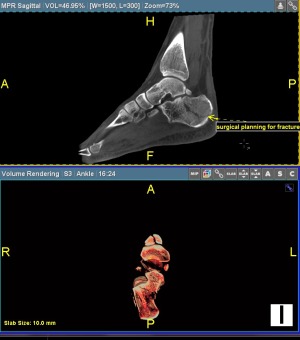From the September 2017 issue of HealthCare Business News magazine
By: Dr. John R. Gleason
A Future Market Insights report estimates a 4.9 percent annual growth rate of orthopaedic imaging over the next 10 years.
Increased demand creates both challenges and opportunities for physicians and their patients.
Most orthopaedic exams are conducted with traditional CT and MR systems. Because these systems are very large and expensive, they are usually installed at hospitals or imaging centers.



Ad Statistics
Times Displayed: 184078
Times Visited: 4550 For those who need to move fast and expand clinical capabilities -- and would love new equipment -- the uCT 550 Advance offers a new fully configured 80-slice CT in up to 2 weeks with routine maintenance and parts and Software Upgrades for Life™ included.
A new entry in the CT market is cone beam CT (CBCT) systems, which offer affordable 3-D imaging at the point of care. This new paradigm equips patients to obtain an initial evaluation, imaging exam, diagnosis and treatment plan — all in a single visit. This is a tremendous advantage for patients, many of whom are in pain and have limited mobility. It also offers greater convenience for orthopaedic specialists.
We recently purchased a CBCT system for our practice and it has proven to be an invaluable tool. As an orthopaedic surgeon, I need extremely high-resolution images to develop an accurate diagnosis.
Our CBCT system delivers exceptional image quality and also captures weight-bearing exams — an important advantage not offered by traditional CT. Seeing the joint in a weight-bearing state helps me determine if a joint is subluxed or dislocated, and allows me to detect displacement of a fracture or a tear in ligaments or tendons. This CBCT system can also help with diagnosis and treatment of arthritis and cartilage lesions of the upper and lower extremities, and evaluation of bony and soft tissue masses.
Being able to deliver a diagnosis and treatment plan minutes after an exam not only saves time, it also reduces stress for patients because I am able to immediately tell them whether they need surgery, or if physical therapy or rest is the best treatment.
We evaluated cone beam CT systems for several years prior to making a purchase. First-generation systems only captured foot and ankle exams, but now systems are available that also image hands, elbows and wrists. Most orthopaedic practices want a system that images upper and lower extremities because that represents their patient base. It’s not practical to invest in a system that only images half of your patients.

